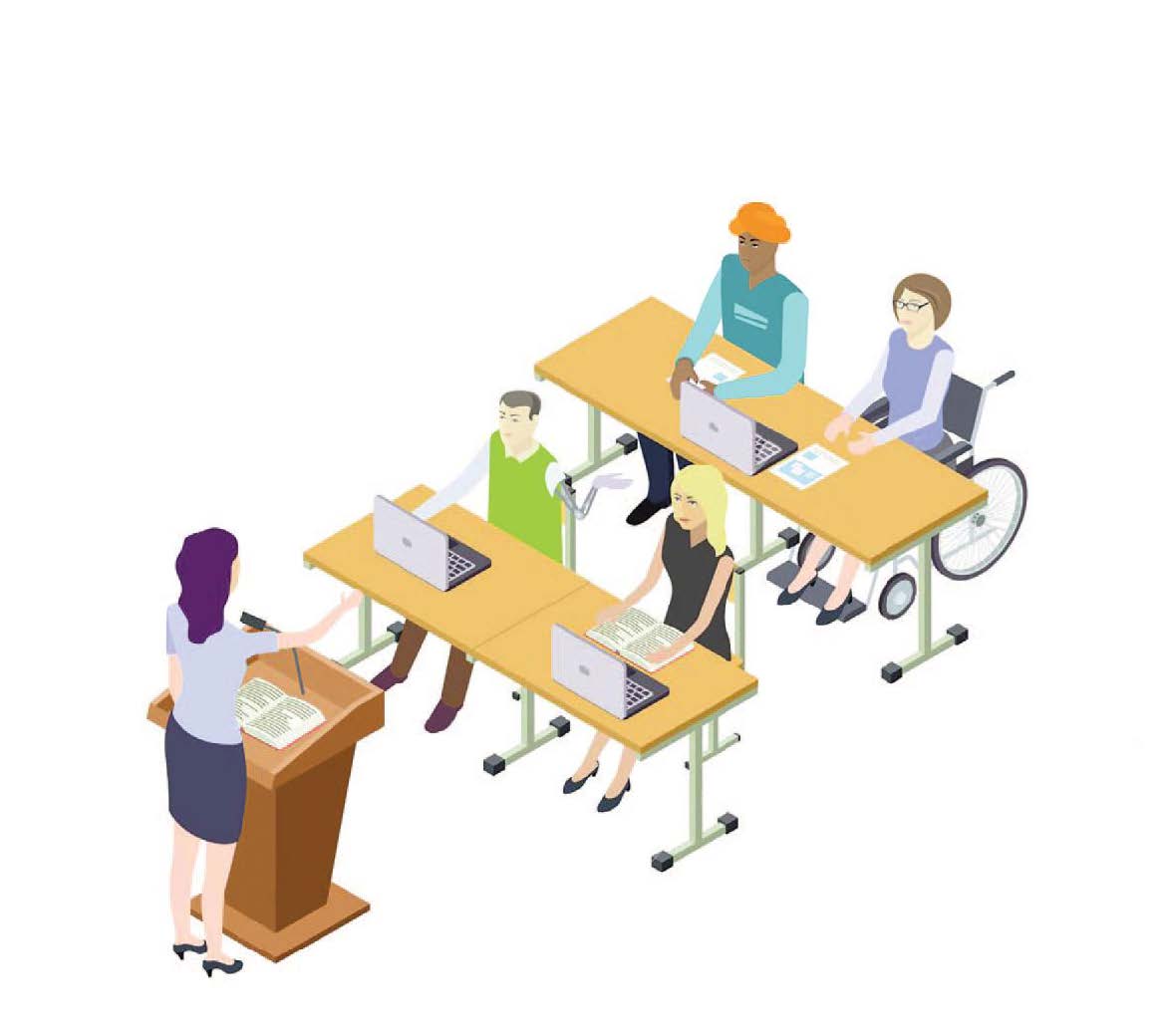
THE LEAST RESTRICTIVE ENVIRONMENT FOR STUDENTS WITH SPECIAL NEEDS
The Individuals with Disabilities Education Act (IDEA), the federal special education law, states that children with disabilities must have a "full continuum of placement options," and that all children should receive services in the "least restrictive environment."
BY LAUREN AGORATUS, M.A.
WHAT THIS MEANS FOR STUDENTS IN SPECIAL EDUCATION
Students with disabilities should have a range of options available to them to meet their needs. This could range from a typical classroom, resource room, self-contained, or out-of-district placement. It is important to note that parents are part of the team that makes the placement decision. The placement must not be made by disability category. For example, a student with intellectual/cognitive disability should not be automatically placed in class for other students with cognitive disabilities. Placement decisions must also not be made based on program categories. This means that a child with learning differences does not have to attend a special program for learning disabled children.
Lastly, placement must not be done based on administrative convenience. This means that the decision is not based on the location of staff or funding. The most important consideration, however, is that children are entitled to the Least Restrictive Environment (LRE).
WHAT IS THE LEAST RESTRICTIVE ENVIRONMENT?
"LRE" means that the first consideration for placement must be a general education classroom in the school the child would have attended if s/he didn't have a disability. Children have the right to a Free, Appropriate Public Education (FAPE) with their typical peers. Alternative placement should only be considered if inclusion in the age-appropriate general education classroom cannot be successful even with the provision of appropriate supports, services, modifications, and accommodations.
For behavioral issues that may impact placement issues, the district should first conduct a Functional Behavioral Assessment (FBA) as part of the evaluation process. The FBA should result in the development of Positive Behavioral Interventions and Supports (PBIS) that are included in the IEP (Individualized Education Program). Often by being proactive rather than reactive, the child can remain in the general education classroom in their home school district. Even if challenging behaviors continue, a manifestation determination (decision if the behavior is due to the disability) must be done prior to any change in placement. It might also be appropriate at this time to update the FBA and PBIS plan in the IEP. In fact, LRE is so important that IEP teams must consider it every year at the IEP meeting. If the child is not in their general education setting, the team must consider which supports and services are needed to get him/her there.
PLACEMENT CONSIDERATION
Many times, families, even districts, may think that the child with disabilities can only attend a separate school. However, research shows that inclusion is mutually beneficial for both students with and without disabilities. Both benefit academically due to the use of differentiated instructional techniques. It is important to note that if parents unilaterally place their child in a school and it is not an IEP team decision, the family is generally responsible for tuition and related services such as physical, occupational, and speech therapy. While children who are unilaterally placed by their parents in a private school are not entitled to FAPE, they may receive some district services based on the plan developed by the district and the private schools regarding how a portion of the district's IDEA funds will be used (see www2.ed.gov/admins/lead/speced/privateschools/idea.pdf)
The bottom line is supports and services are portable to any school or class. The individual needs of each child must be considered – that's the "I" in IEP. Even the same child can go from placements ranging from a segregated setting to full inclusion, based on their strengths and needs at the time. Children with disabilities should be educated with their non-disabled peers to the maximum extent possible, and even if they are in a separate setting, they should have the opportunity to interact with their non-disabled peers in before- and after-school activities, clubs, etc.•
ABOUT THE AUTHOR:
Lauren Agoratus, M.A. is the parent of a young adult with multiple disabilities. She serves as the State Coordinator for Family Voices-NJ and as the central/southern coordinator in her state's Family-to-Family Health Information Center. FVNJ, the NJ F2FHIC, and the FFCMH State Organization, are all housed at the SPAN Parent Advocacy Network (SPAN) at spanadvocacy.org
PROPER PLACEMENT : RESOURCES FOR LEAST RESTRICTIVE ENVIRONMENT
PARENT TRAINING AND INFORMATION CENTERS INFORMATION ON FAPE IN LRE Find Your Parent Center SPAN PARENT ADVOCACY NETWORK Inclusion with the End in Mind spanadvocacy.org/inclusion-with-the-end-in-mind parentcenterhub.org/find-your-center Placement Options parentcenterhub.org/placement-overview Least Restrictive Environment parentcenterhub.org/placement-lre
NJ COALITION FOR INCLUSIVE EDUCATION - INCLUSION njcie.org/inclusion
SPAN PARENT ADVOCACY NETWORK Inclusion with the End in Mind spanadvocacy.org/inclusion-with-the-end-in-mind parentcenterhub.org/find-your-center Placement Options parentcenterhub.org/placement-overview Least Restrictive Environment parentcenterhub.org/placement-lre Inclusion of Children with Special Needs in After-School and Summer Programs spanadvocacy.org/download/inclusion-of-children-with-special-needs-in-after- school-and-summer-programs Fact Sheet on Inclusive Education spanadvocacy.org/download/inclusive- education/?wpdmdl=52181&refresh=5e442a829d1e81581525634
Special Education Frequently Asked Questions Mini-Videos (see especially How Can my Child Be Included in School?, and What Can I Do if My Child Has Challenging Behaviors?) spanadvocacy.org/video-webinar-archive/faq-special-education